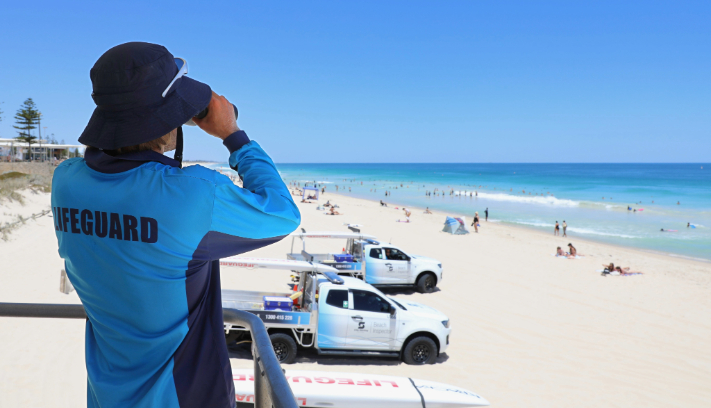- Home
- City and Council
- News
- Record run of rescues reveals growing beach safety awareness gap
Record run of rescues reveals growing beach safety awareness gap

An alarming rise in beach rescues by the City of Stirling – including a shocking all-time high in December – has prompted an appeal for greater awareness of the dangers of Perth beaches.
An alarming rise in beach rescues by the City of Stirling – including a shocking all-time high in December – has prompted an appeal for greater awareness of the dangers of Perth beaches.
The City employs four full-time Beach Inspectors who patrol the City’s beaches year-round and up to 16 casual Beach Lifeguards who bolster these patrols from the September school holidays to the end of April.
In December, the City’s Beach Services team performed an unprecedented 374 rescues – more than they typically perform in an entire year.
The rescues involved struggling swimmers, a couple whose boat had capsized off Mettams Pool and even a trio of young men who were getting blown out to sea on an inflatable raft.
The December figure brought the total number of rescues for the 2024/25 financial year to almost 800, making it far and away the City’s worst year on record after just six months.
City Beach Services Team Leader John Snook said the statistics pointed to a growing lack of general ocean safety awareness – a trend seen firsthand by members of his team over the past couple of years.
Mr Snook has led the Beach Services team for more than 25 years after starting his career with the City as a lifeguard in 1986.
"Our team is seeing more people who either aren’t aware of how dangerous the ocean can be or don’t have enough respect for it,” Mr Snook said.
“The basic ocean safety messages don’t seem to be reaching the community like they used to, so that lack of education is one of our concerns.
“We get a lot of tourists, international students and people from migrant backgrounds – particularly at Scarborough Beach – who haven’t grown up learning about the fundamentals of ocean safety, and those cultural differences can put them at greater risk in the water.
“My main piece of advice for everyone is to swim between the flags at a patrolled beach, where you have highly trained Beach Inspectors, Beach Lifeguards and volunteer surf life savers looking out for you.”
Another trend seen by City staff in recent years is busier beaches on weekdays, as post-COVID work arrangements give people more flexibility.
The City is the only local government in Western Australia that provides its own beach patrols 365 days a year.
The Beach Services team also has strong relationships with local surf lifesaving clubs Scarboro and Trigg Island, which have almost 2,500 members between them.
The surf lifesaving clubs operate a volunteer rescue service at the two busiest beaches in the City on weekends and public holidays between October and April.
They also provide patrols at the City’s beaches during the abalone season from December to February.
City of Stirling Mayor Mark Irwin, a past president of Scarboro SLSC and Surf Life Saving WA, said the series of recent drownings at WA beaches was a tragic reminder of the dangers of the ocean.
“We don’t want to talk anyone out of going to the beach because we have incredible beaches in the City of Stirling – we just want everyone to be safe,” Mayor Irwin said.
“Beaches like Scarborough and Trigg are fantastic places to visit, but in certain conditions, they can be unsafe for people of any skill level.
“Pay attention to the people who are there to keep you safe, pay attention to the conditions and don’t underestimate how powerful the ocean can be.
“If you’re not a particularly strong swimmer or you don’t have much experience in the surf, I would urge you to put your safety first and stay well within your limits.”
Top beach safety tips:
• Swim between the flags on a patrolled beach
• Heed the advice of warning signs and safety personnel
• Stay within your limits – if in doubt, stay out
• Don’t drink and swim
• Speak to City Beach Inspectors, City Beach Lifeguards or volunteer surf life savers if you have questions or concerns
• Learn the visual signs of a rip current, such as darker water, fewer breaking waves, a rippled surface, and sand/foam/debris that extends beyond the surf zone
• If you can’t swim, don’t enter the water. Instead, enjoy the beach experience from the sand.
To learn more about beach safety, visit www.beachsafe.org.au/surf-safety or www.stirling.wa.gov.au/beaches.
